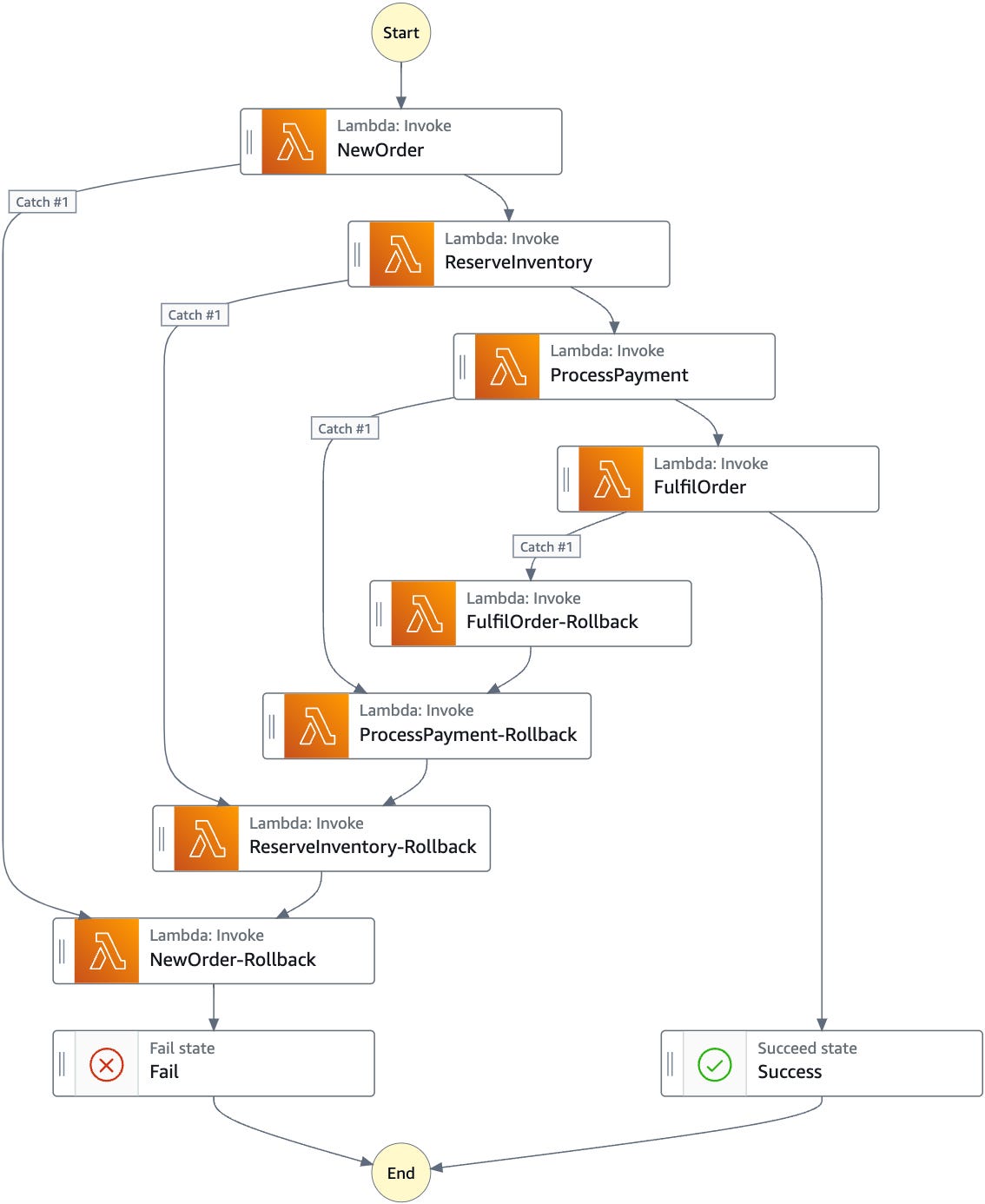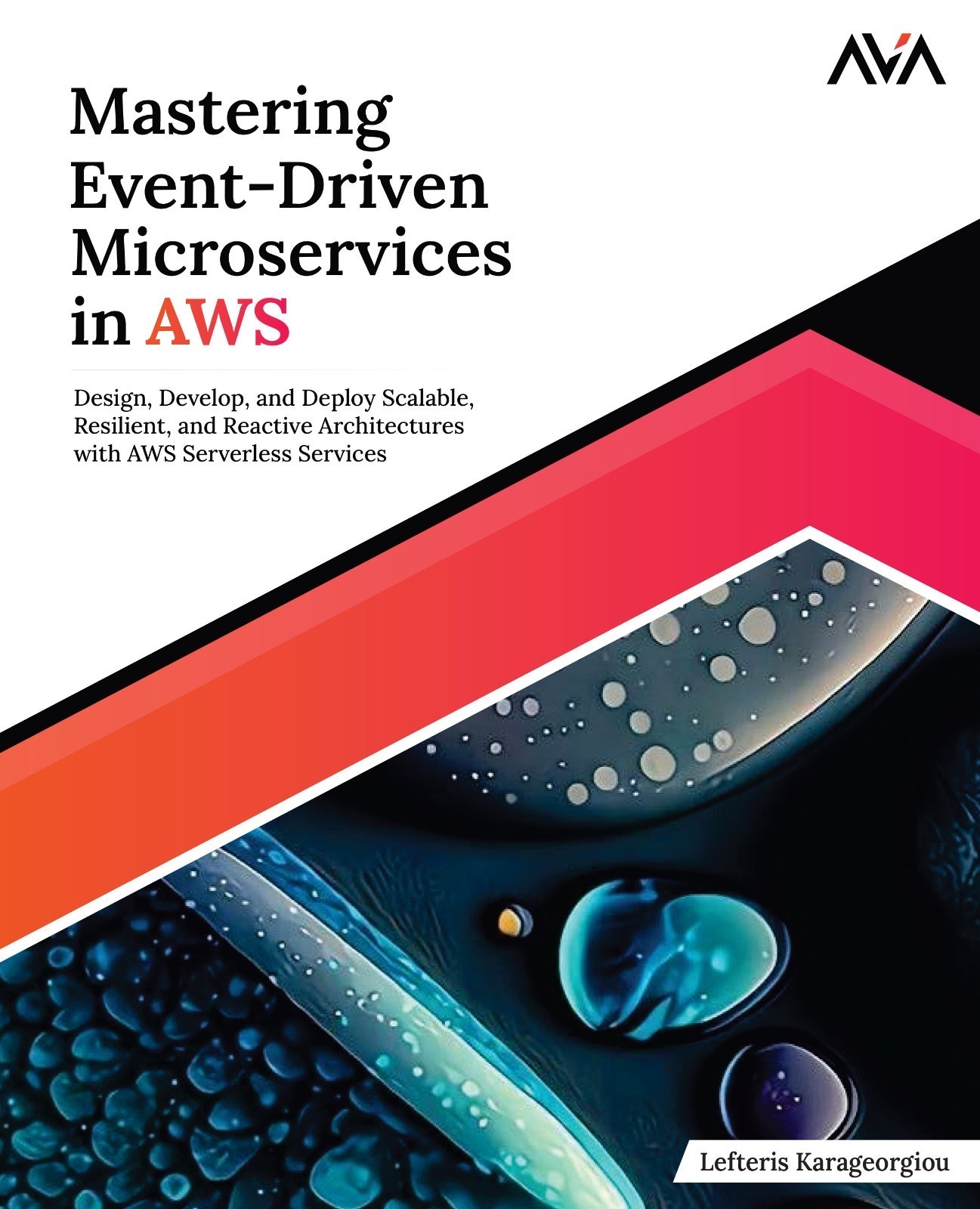Mastering Distributed Transactions with AWS Step Functions and the SAGA Pattern
The SAGA pattern has become a cornerstone of distributed systems architecture, especially in serverless environments where microservices need to maintain data consistency across multiple services. AWS Step Functions provides an elegant, visual way to implement this pattern without the complexity of writing custom orchestration code.
Understanding the SAGA Pattern
The SAGA pattern breaks down a long-running transaction into a series of smaller, independent transactions. Each step in the saga can be committed individually, and if any step fails, the saga executes compensating actions to undo the work of previous steps. This approach is particularly valuable in serverless architectures where you can't rely on traditional ACID transactions across distributed services.
Think of booking a vacation package: you need to reserve a flight, book a hotel, and arrange car rental. If the car rental fails, you need to cancel the hotel and flight reservations to maintain consistency. The SAGA pattern handles this orchestration and compensation automatically.
Real-World Example: E-commerce Order Processing
Let's examine a comprehensive real-world implementation for an e-commerce company processing customer orders. This example demonstrates how each Lambda function pairs with a corresponding rollback function to maintain system consistency.
The Order Processing Workflow
Consider an e-commerce platform where customers place orders that must coordinate across multiple services:
NewOrder - Create an order record in the order management system
ReserveInventory - Hold product quantities across multiple warehouses to ensure availability for this specific order
ProcessPayment - Charge the customer's payment method through the payment gateway
FulfillOrder - Ship the order to the customer by creating shipping labels and notifying fulfillment centers
Each of these services operates independently and maintains its own data store, whether that's a customer database, inventory management system, payment gateway, order management system, or shipping coordination service.
Rollback Function Architecture
The key innovation in this SAGA implementation is that each Lambda function pairs with a corresponding rollback Lambda that reverses its state changes on failure. When any service throws an error contained in a designated field of its response, the system triggers a cascade of rollback functions.
NewOrder-Rollback: Removes the order record and releases the order number.
ReserveInventory-Rollback: Returns reserved inventory to available stock.
ProcessPayment-Rollback: Initiates payment reversal or refund.
FulfillOrder-Rollback: Cancels shipping notifications and voids labels.
The rollback functions execute in reverse order of the original workflow, ensuring proper dependency management. For instance, you must cancel shipping arrangements before releasing inventory reservations, and payment rollbacks should occur before removing the order record entirely for audit trail purposes.
Steps to Implement SAGA with Step Functions
Define Transactions: Identify the steps (NewOrder, ReserveInventory, ProcessPayment, FulfillOrder) and their compensating actions.
Create Lambda Functions: Develop Lambda functions for each transaction and rollback. Ensure these functions are idempotent to handle retries.
Design the State Machine: In the AWS Step Functions console, create a state machine. Use the visual editor to map out the workflow, linking each step to its corresponding Lambda function.
Implement Error Handling: Configure error handling in the state machine. If a step fails, trigger the rollback functions for preceding successful steps.
Monitor and Optimize: Use CloudWatch to monitor the state machine. Analyze logs and metrics to optimize performance and troubleshoot issues.
Benefits
Scalability: Step Functions can manage workflows of any complexity.
Resilience: The SAGA pattern with compensating actions ensures fault tolerance.
Visibility: Visual workflows simplify understanding and debugging.
Conclusion
Implementing the SAGA pattern with AWS Step Functions enhances the reliability and maintainability of cloud applications. By defining transactions and their rollbacks, you ensure data consistency across microservices. This approach not only simplifies error handling but also scales effortlessly with your application. Leverage Step Functions to orchestrate your workflows and adopt best practices in cloud engineering without the burden of extensive coding.
If you're intrigued by the concepts of event-driven architectures and microservices, I invite you to explore my book, Mastering Event-Driven Microservices in AWS. This practical guide equips you with the knowledge and skills to design, build, and operate resilient, scalable, and fault-tolerant systems using AWS services.
Happy reading!



